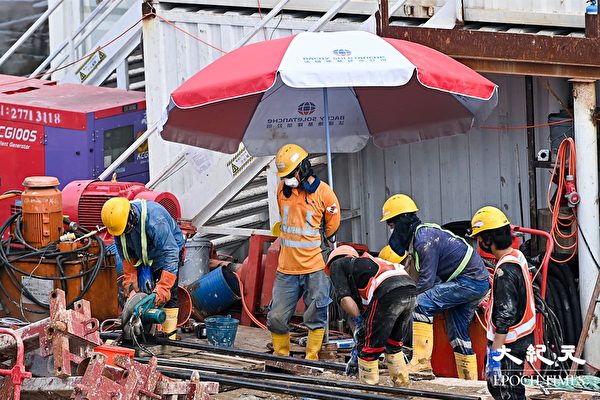As the weather gets hotter, the Taiwan Ministry of Health and Welfare’s National Health Insurance Administration (NHIA) has emphasized the importance of sun protection and hydration to prevent heat-related injuries during this scorching summer. Providing three preventive tips and five emergency steps, the NHIA aims to keep families safe from heat damage.
According to the NHIA, there’s a saying that goes, “Without eating rice dumplings in May, one dare not put away the winter clothes.” This implies that with the arrival of summer after the Dragon Boat Festival, temperatures start to rise significantly, signaling the need to pack away winter clothes and blankets. As the summer solstice approaches, temperatures are expected to soar even higher.
Data from the Central Weather Bureau shows that Taiwan’s average annual temperature has increased by approximately 1.6°C compared to the past century (1911-2020). In terms of seasonal distribution, the number of summer days in the early 21st century (since 2001) has increased to around 120-150 days.
The NHIA has warned that the months of July and August coincide with the summer vacation for school children, making it a peak period for activities and family travel. With temperatures rising, the risk of heatstroke and heat-related emergencies also increases, especially among infants and young children who struggle to regulate their body temperature and may not adequately replenish fluids or cool down by sweating. Older children are prone to heat-related discomfort and injuries due to neglecting the high temperatures and dehydration during physical activities.
Collaborating with the Central Weather Bureau, the Ministry of Education’s Department of Elementary and Preschool Education, and other agencies, the NHIA has conducted press conferences and released educational materials on preventing heat injuries for children before the summer vacation begins. The joint efforts aim to remind parents and students to be cautious of heat damage whether indoors or outdoors, reducing the occurrence of heat emergencies and ensuring a happy, healthy summer break.
In light of intensified climate change effects leading to an increase in extreme hot days and a decrease in cold days, the Central Weather Bureau has been issuing “heat information” since 2018 to alert the public to prevent heat injuries. The bureau updates this information on its official website, mobile app “Life Weather,” and Facebook page “Weather Bulletin” after releasing heat information.
Furthermore, meteorologists are increasing broadcasts and reminders through news media to raise awareness among the public and relevant government agencies about the impact of hot weather on health and daily life.
The Ministry of Education’s Department of Elementary and Preschool Education annually shares the heat injury prevention educational materials provided by the Ministry of Health and Welfare’s NHIA with schools at all levels to enhance awareness and ensure students take precautions against heat injuries. During the summer, the national educational radio station broadcasts information on preventing heat injuries, with schools distributing brochures on heat injury prevention before the summer break to remind parents and students to stay safe during the hot summer days.
To prevent heat injuries, it is important to be mindful in various environments, including outdoors in hot and stuffy conditions, poorly ventilated indoor spaces, and closed vehicles. Therefore, it’s crucial to keep an eye on children both indoors and outdoors. Using a popular children’s TV character, the NHIA has appointed a one-day ambassador to provide three tips for preventing heat injuries and five steps for emergency treatment, empowering children to protect themselves from the threats of heat damage.
1. Stay cool: Opt for light-colored and breathable clothing, especially for infants and young children, avoiding excessive layering. Keep indoor spaces cool and well-ventilated, and when outdoors, shield infants and young children from direct sunlight using handheld fans, sunhats, UV-protective clothing, or sunscreen.
2. Stay hydrated: Whether indoors or outdoors, regularly replenish fluids in moderation, avoiding sudden excessive intake or ice-cold water, and not replacing water with sugary drinks.
3. Stay alert: Be mindful of weather updates when outdoors, avoiding activities between 10 am and 2 pm. When traveling by car, always check if children have exited the vehicle to prevent accidents due to children being left in hot cars when asleep. Particularly for infants traveling in strollers to childcare centers, caregivers and drivers must tally the headcount upon arrival, immediately contacting parents if a child is missing. Pay close attention to children’s well-being during activities, and if any discomfort arises, take immediate rest breaks and seek medical attention when necessary.
Emergency steps for treating heat injuries:
1. Find shade and ventilation: When children show signs of heat injuries such as tiredness, loss of appetite, or decreased activity levels, promptly relocate them to a shaded and well-ventilated area.
2. Remove excess clothing: Take off tight or non-breathable clothing from children and lay them down flat with their feet slightly elevated. In case of vomiting, help them lie on their side to ensure unobstructed breathing and prevent airway blockage that can pose life-threatening risks.
3. Cool with water: Submerge the body below the neck in cold water or wipe the body with cool water, and fan to lower body temperature. If available, place cold beverage cans on the child’s neck, armpits, and groin area.
4. Replenish with cool water: For conscious children, offer a small amount of lightly salted lukewarm water or electrolyte drinks to restore the body’s electrolytes. If a child shows signs of confusion, refrain from giving water.
5. Seek medical help promptly: During the process of managing heat injuries, if symptoms like profuse sweating, thirst, nausea, vomiting, mild confusion, fainting, or any severe conditions arise that exceed immediate care capabilities, dial emergency services at 119 for medical assistance.
By promoting these preventive measures and emergency procedures for heat injuries, families can enjoy a safe and comfortable summer while staying vigilant against heat-related risks.

